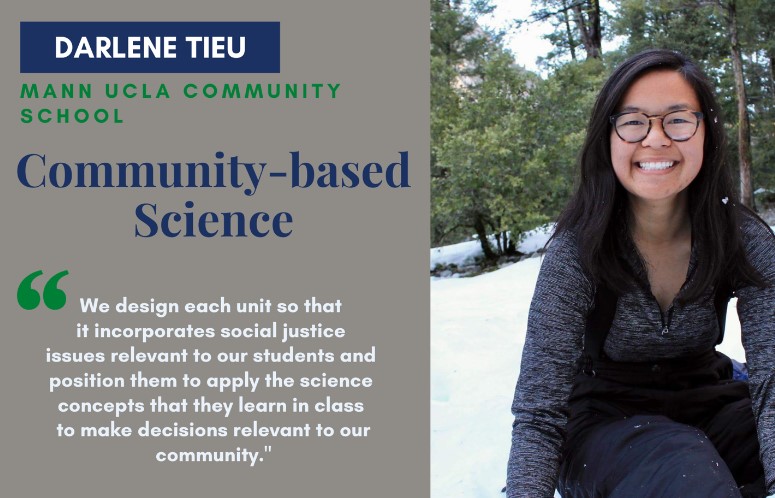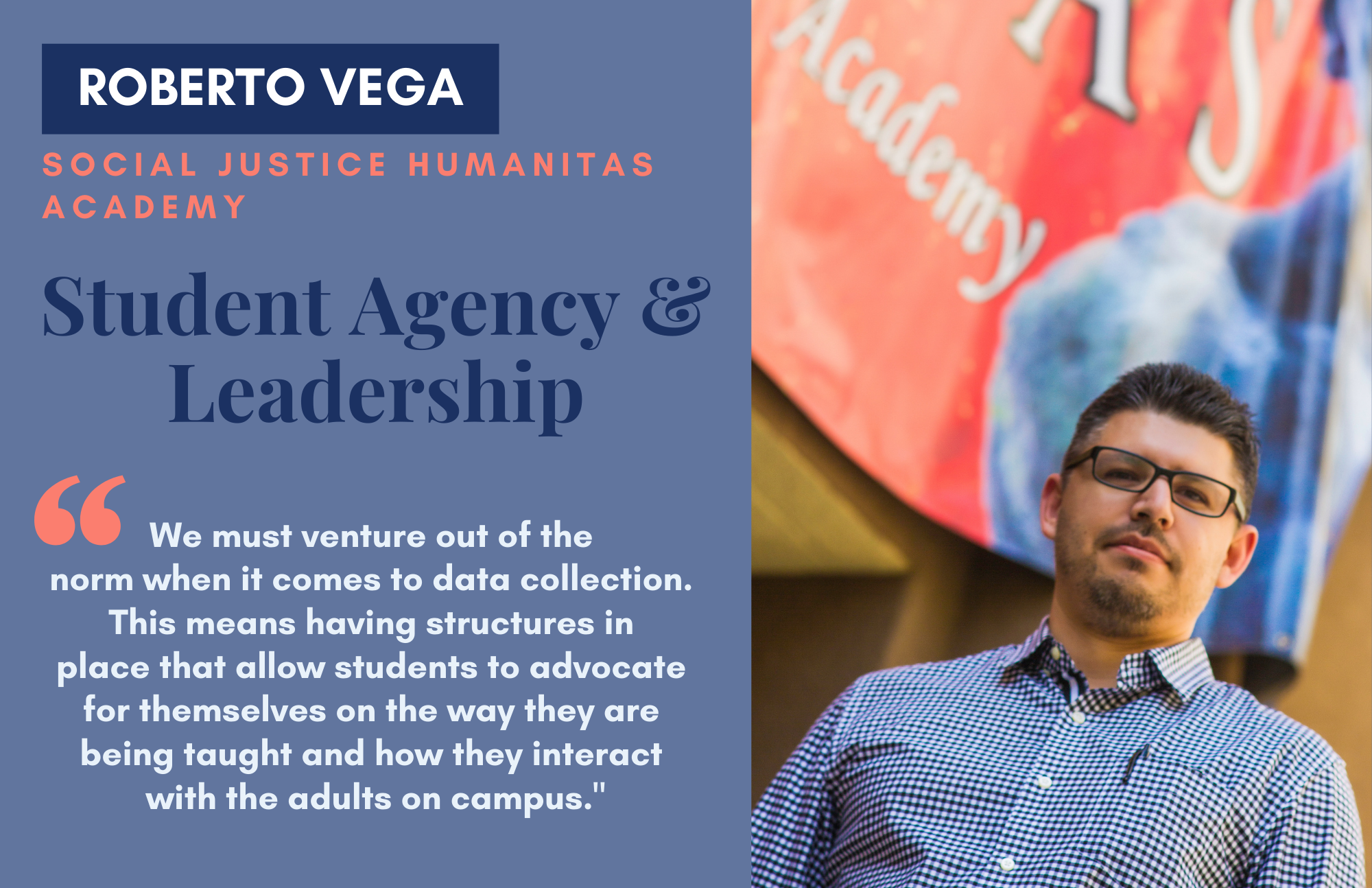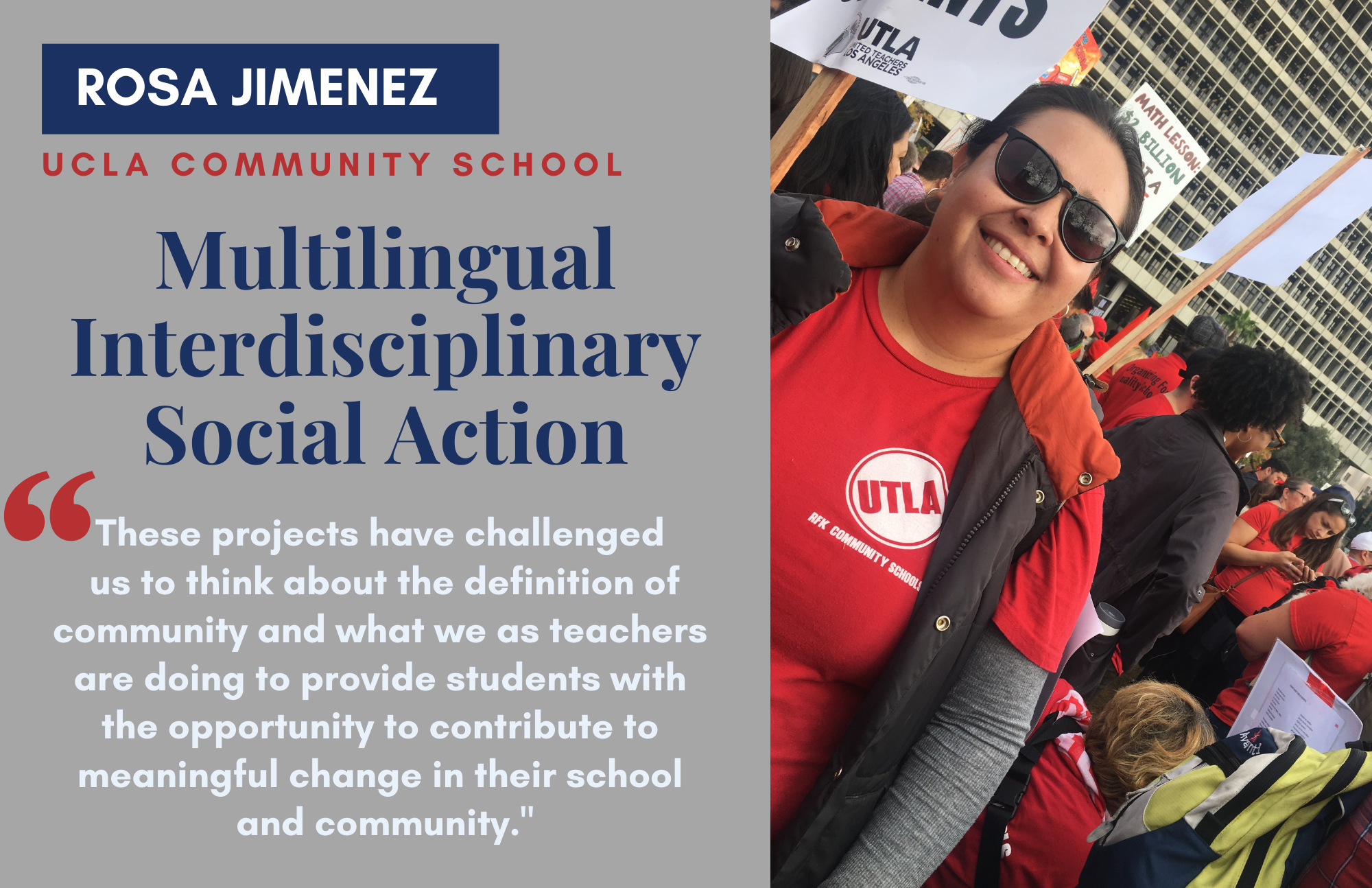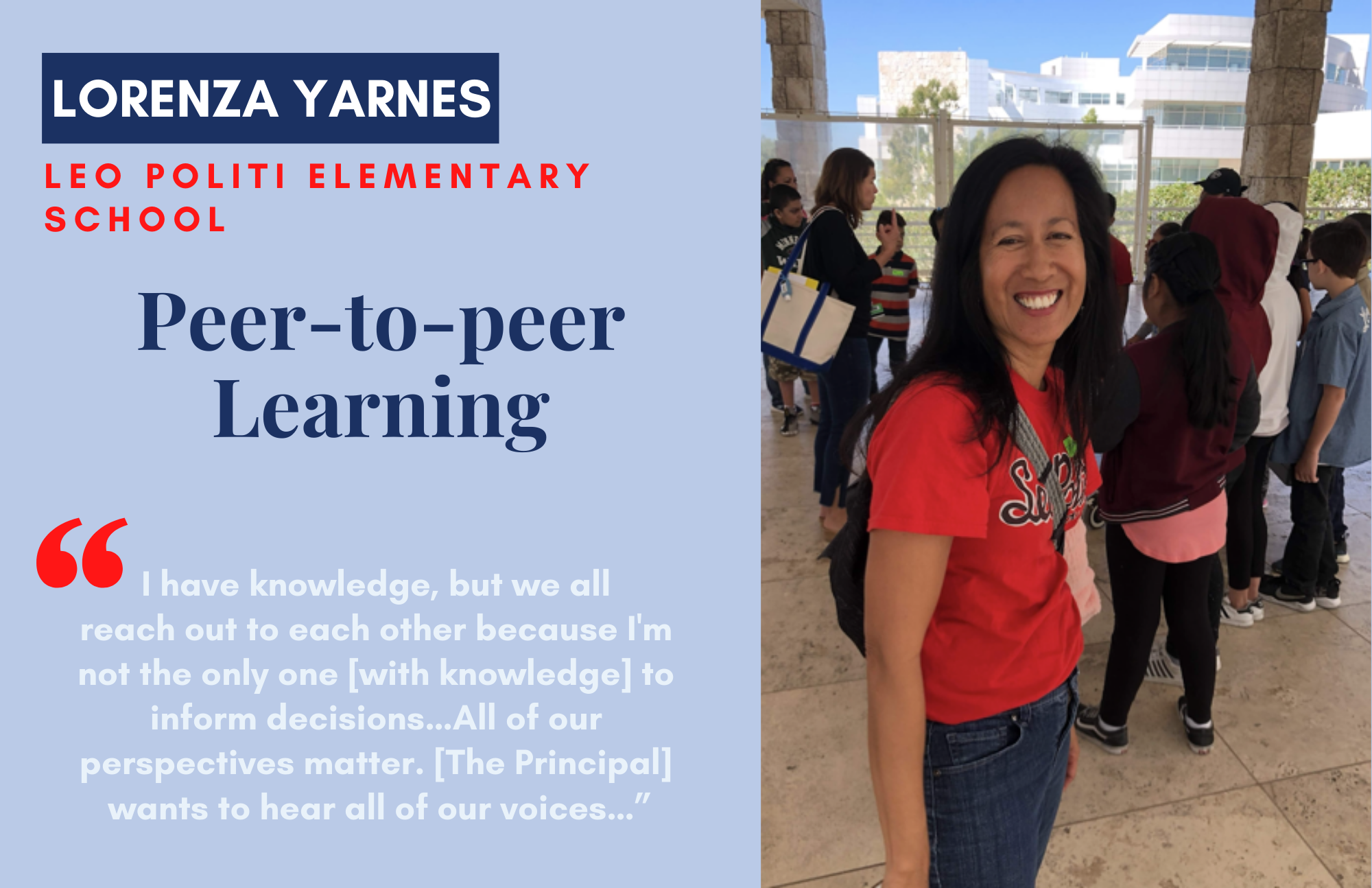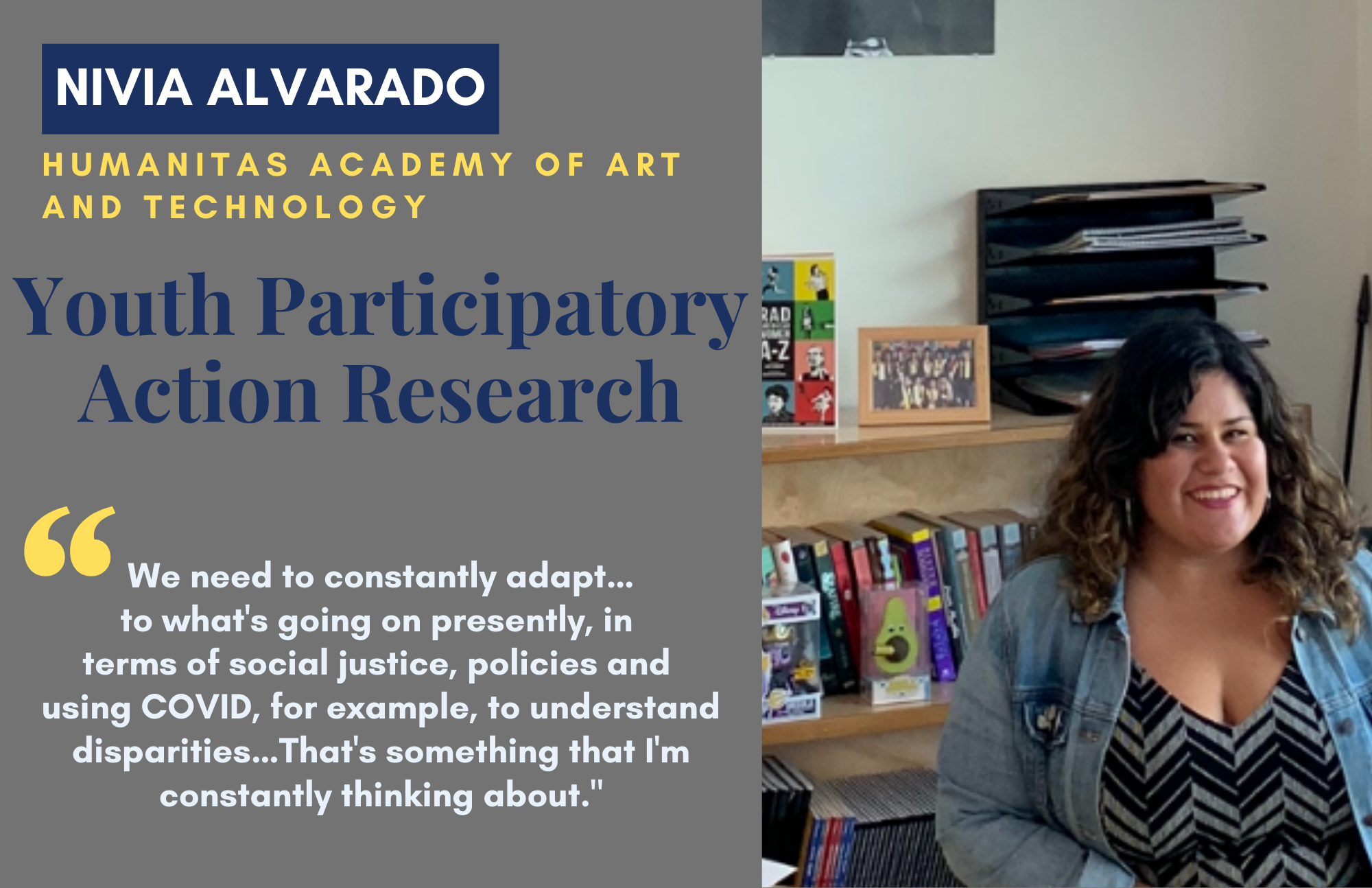Community Teachers:
Taking Ownership of Whole Child Educational Practices
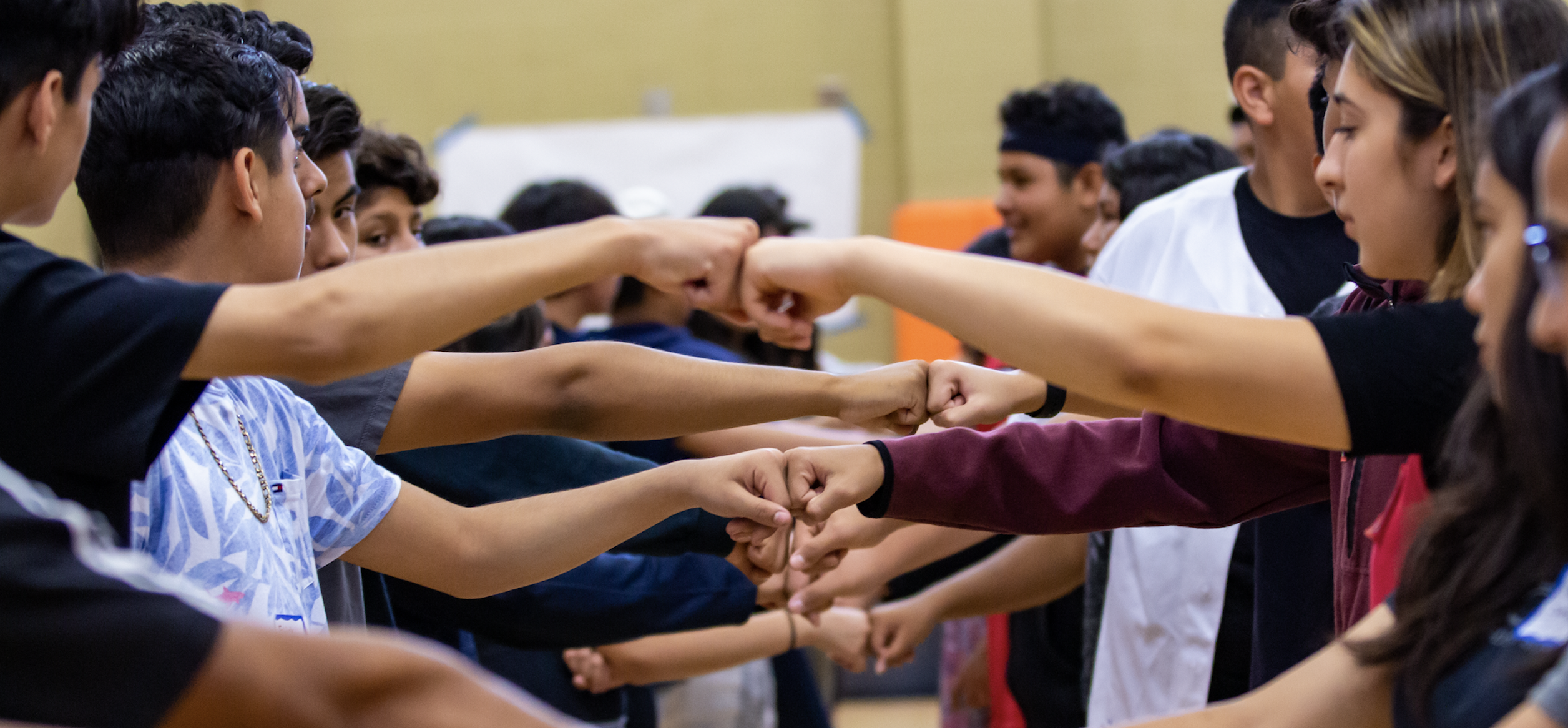
COVID-19 has revealed the vast disparities and the structural inequalities that underserved communities have endured for generations. The disproportionate health, economic and educational impacts suffered by our most marginalized communities—driven by deep and persistent social and racial inequities—have become even more pronounced and discernible as a result of the pandemic. As states and cities respond to this wake-up call, community schools strategies have emerged as a promising approach to address and recover from the devastating toll of COVID-19 on students’ well-being and learning. In California, for example, Governor Newsom’s 2021-2022 spending bill includes a $2.8 billion investment to transform thousands of school sites into community schools. In Los Angeles, LA Unified has committed to support the transformation of more than 70 schools into community schools by 2025. These commitments compel and remind us that this work must be guided, in partnership, by the experiences and efforts of those integral to the work—teachers.
Community schools are not new. They are a century-old idea that recognize the inextricable link between schools and communities. Often sharing four evidence-based components or “pillars”— integrated student supports; expanded and enriched learning time; family and community engagement; and collaborative leadership—community schools are, first and foremost, dedicated to powerful teaching and learning. While the pandemic has plainly highlighted the need for the service-based pillars of the approach, the current focus on community schools presents an important opportunity to re-center attention on how community schools influence the core instructional practices and relationships within schools.
This report, co-authored by community school practitioners, focuses on the work of educators within community schools in developing, implementing and owning whole-child educational practices. It is the result of a multi-year project that brought together “Teacher Research Fellows” from five “veteran” community schools within the Los Angeles Unified School District (LA Unified) to explore and document the critical role of teachers within the approach. We (Teacher Research Fellows) came together in 2019 to articulate a rich history of community schooling within LA Unified that has supported our work; document the community-based teaching practices employed within our classrooms and schools; identify the critical roles we play to ensure students’ growth and development; and to describe the structures and practices that support our efforts and community-based practices.
While the communities we serve are distinct and our practices vary, this report explores what it means to be a “community teacher”—teachers who develop the contextualized knowledge of culture, community and identity of their students and families as the core of their teaching practice. Strengthening the community by supporting students’ academic, social and emotional development requires that we radically shift how we view and conduct our work. This report documents how community schools represent alternative spaces to develop new practices and norms where schools—by elevating the voices of teachers—and community partners work collectively to respond to local assets and needs.
A History of Community Schooling within LA Unified
In 2017, the LA Unified Board of Education unanimously passed the Embracing Community Schools Strategies in the Los Angeles Unified School District Resolution as a holistic means to support students’ success. Eighteen months later, as a result of the LA teacher strike wherein teachers, alongside students, families and community partners, advocated for school improvements through community partnerships and local decision-making, the district agreed to fund and launch its Community Schools Initiative (CSI). While the Board resolution and subsequent agreement signaled first-time, system-level support for the approach, a history of strong partnerships, local advocacy and the demand for shared leadership and decision-making provide the foundation for the district’s CSI.
Early examples of community schools in LA Unified date back to at least 1991 and the launch of a national project aimed to “turn-around” low-performing schools through new designs and strategies. In partnership with United Teachers Los Angeles (UTLA) and locally-based organizations, LA Unified proposed a “full-service” approach that necessitated rethinking how schools braid with community resources to influence the whole child, whole school and whole community. While the national project fizzled, the three key components of the redesign—shared leadership, innovative curriculum and instruction, and integrated student supports and services—continued to guide community school transformations across the district.
In the decades that followed, a new crop of community schools emerged. Located in every region of the district, emergent community schools stemmed from demands for local control that included the voices of teachers, students, families and community partners (a call that was amplified by the dramatic growth of charters in the district); collective teacher autonomy to design innovative and rigorous schools based on the strengths and needs of the local community; and an expansion of resources and services to support students’ academic, social and emotional development. The adoption of a series of district policies acknowledged these appeals and formalized a community-based, teacher-led and student-centered movement to advance equitable public schooling. The power of these local partnerships and policies provided the impetus of a community school campaign that resulted in the passage of the 2017 community schools resolution. Led by Reclaim our Schools Los Angeles (ROSLA)—a coalition of parents, educators, students, and community members—neighborhood community schools were positioned as a means to empower the community and advance opportunities in public education for all students so they thrive in the classroom and beyond.

This project explores and documents the practices of teachers in community schools with roots in this rich history. “Portraits of Practice” detail the work of Teacher Research Fellows at Humanitas Academy of Art and Technology at Esteban E. Torres High School, Leo Politi Elementary School, Mann UCLA Community School, Social Justice Humanitas Academy at Cesar E. Chavez Learning Academies, and UCLA Community School at the Robert F. Kennedy Community Schools. School-level outcomes, based on the administration of the district’s School Experience Survey and teacher retention rates, demonstrate that students and teachers view their schools as places where both students and adults can grow and thrive.
The Work of Community Teachers
If we want to equip our students with the skills and tools they need to both succeed in and shape their future, we need to believe that change is possible.”
Though our communities are unique and our practices vary, this report details our shared work as relationship-builders, collaborative leaders, problem-solvers, critical change agents, and community members to create learning spaces that respond to the needs of the whole child, the whole school and community. These roles are reinforcing and both connect and contribute to an environment that is community-based, student-centered, and recognizes teachers’ expertise, knowledge and care. These roles, critically, are not “add-ons” but rather represent a radical shift in how we view and conduct our work.
We are relationship-builders. Relationships are foundational to our practice. Relationship-building with and between students—key to learning and development—shapes our practice. We use multiple strategies to know, understand and value each student to ensure academic, social and emotional needs are met. Our practices are not only shaped by the caring relationships we develop with our students, but also by the positive and trusting relationships we foster with other practitioners, community school coordinators, administrators and community partners. These relationships provide critical support to the development and implementation of our practice.
We are collaborative leaders. Our classroom practices do not exist in isolation from the larger school environment. Rather, we work collectively, and with the support of students, families, community partners, coordinators and administrators to transform all aspects of the learning environment, signaling that we are all partners in supporting students’ learning. As collaborative leaders and shared decision-makers we ensure alignment between classroom practices and the school environment to effectively respond to students’ holistic needs.
We are creative problem-solvers. In addition to serving as collaborative leaders, community teachers play a key role in identifying and solving complex issues that impact our students’ academic, social and emotional growth and wellbeing. Our schools are spaces that enable, and encourage us to design, evaluate, and implement strategies to overcome existing obstacles, to answer questions as they arise, and to continuously move towards achieving shared goals. Our practices make this apparent–when issues arise, we get creative.
These roles, critically, are not “add-ons” but rather represent a radical shift in how we view and conduct our work.”
We are agents of social change. As community teachers, we play a key role in realizing successful changes within our school settings and beyond. In collaboration with others within our schools (especially our students), we work to influence, change and improve the learning environment. In addition to classroom innovations which aim to best address the individualized talents and needs of our students, community teachers view themselves as advocates and activators—individuals willing to initiate actions to drive transformational school change and to contribute to the solution of critical social and global challenges. If we want to equip our students with the skills and tools they need to both succeed in and shape their future, we need to believe that change is possible.
We are critical community members. Community schools are grounded in the belief that the school belongs to all of us—students, families, teachers, and school staff. They are democratic spaces. Recognizing and redefining the role of teachers as relationship-builders, collaborative leaders, change agents and as problem-solvers is vital to building a democratic, inclusive and empowering environment wherein all stakeholders feel that their expertise and commitment to the community is recognized and valued.
Building Support for Community Teaching
Our practice is guided by an important understanding that we do not act alone, rather we form part of a complex, supportive and dynamic system that shapes and is shaped by the structural features and cultural context of our schools.”
In addition to the vital resources and services that are built into the community schools approach—e.g., integrated student supports, expanded and enriched learning time opportunities—a range of critical supports enable community teachers to prioritize relationships, problem-solving, leadership and the other roles we value. This report details the structures that support our work across Consortium Community Schools. In particular, democratic decision-making, a culture of inquiry, and collective autonomy and agency empower community teachers to shift their practices in ways that sustain powerful and meaningful learning. These structural and cultural features serve as a constant reminder that teachers do not act alone but are part of a complex and dynamic system. Figure 1 illustrates this complexity.
Figure 1: School-wide Support for Community Teachers as Relationship-builders, Collaborative Leaders, Critical Problem-solvers, Change Agents and Critical Community Members
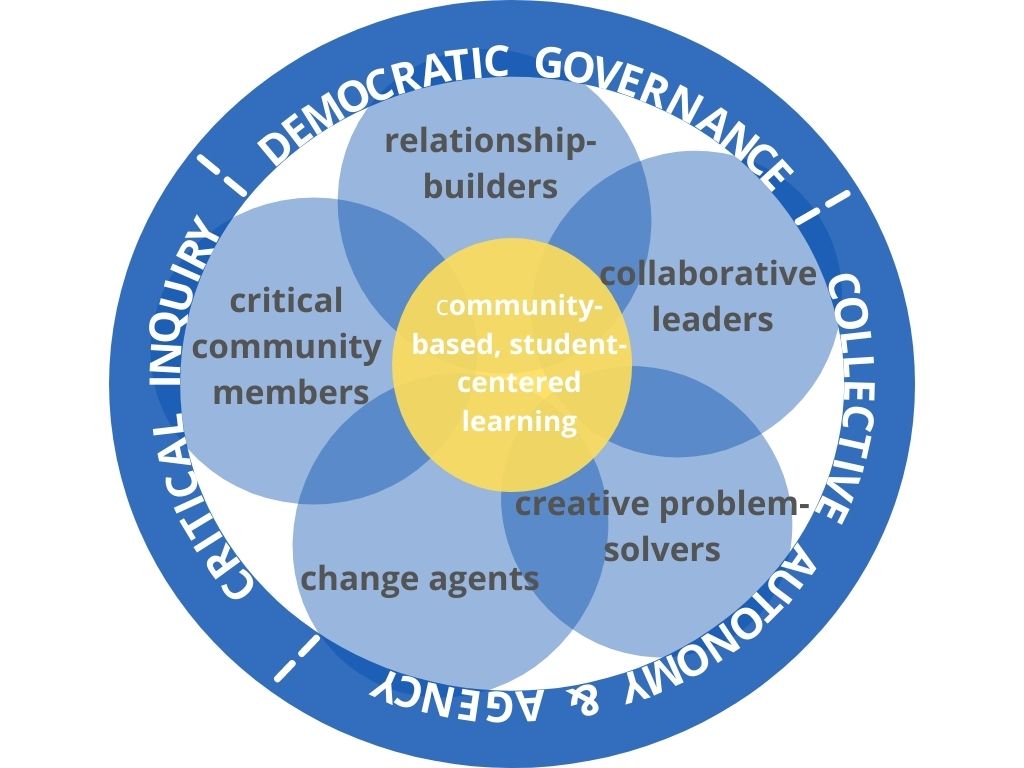
Democratic governance structures. Grounded in the belief that the school belongs to students, families, teachers and school staff, community schools aim to elevate the voices of the community in a lateral structure of leadership and schooling that democratizes power and decision-making. The identification of “collaborative leadership” as a key pillar of the approach serves as a commitment to democratic governance that supports an inclusive and empowering learning environment that values all community members.
Democratic governance structures serve as a reminder of the power of public education as spaces that enable all stakeholders to learn about, contribute to, and advocate for change in their communities.”
Democratic structures, such as Student Steering Committees, generate authentic student input and reflection to promote meaningful change. School Governance Councils, wherein students, parents, community members and teachers play decision-making roles, ensure all stakeholder groups shape school policy and practice. Indeed, the expectation that teachers will engage in shared decision-making through expanded leadership roles has been codified across Consortium Community Schools. Governance teams (e.g., grade level teams, department teams, anti-racist coalitions, etc.) across community schools also serve to broaden the engagement of stakeholders and inform the decision-making process. This flat system of governance recognizes that community teachers possess expertise and a contextualized knowledge of the community and are best positioned to collaboratively engage in developing and implementing a shared vision that responds to the needs of our local communities. Democratic governance structures serve as a reminder of the power of public education as spaces that enable all stakeholders to learn about, contribute to, and advocate for change in their communities.
A culture of inquiry. Community schools are learning environments where there is a fervor for questioning and learning—a desire to understand and challenge the status quo. A “culture of inquiry” enables and encourages community teachers to co-construct practices based on students’ authentic interests and questions. Through an inquiry-based process of learning, shaped by students’ experiences, language and cultural assets, community teachers facilitate students’ acquisition of new knowledge and understandings based on the gathering of new information and ideas and by challenging longstanding assumptions.
Beyond classrooms, a culture of inquiry promotes meaningful collaboration among adults within the learning space. Together, staff, administrators, families and community partners seek answers to important and relevant questions. Student and school-level data, used in a cycle of inquiry, inform these questions and continuously improve the work. Community schools share a reliance on and an appreciation for data collection efforts and strategies, as well as shared knowledge for interpreting data collected. A culture of inquiry, however, also provides room for and welcomes differences and varied perceptions to enrich the learning experience for all. A culture of inquiry also provides space for recognizing successes. Consortium schools observe and celebrate the attainment of locally defined goals and shared commitments.
Collective autonomy and agency. Community teachers work to create opportunities that allow students to direct and assess their own learning—practices that nurture students’ agency. To support student agency, structures are in place that support teachers’ capacity to make key decisions that affect the content and conditions of the work, and sense of action. Though democratic governance structures support shared decision-making, it is a process of collective reflection and inquiry within community schools that support action and collective agency. By intentionally working together towards a shared goal, community teachers gain the confidence, and inspiration needed to act and make change.
Structures such as teacher-led professional learning opportunities, routine and regular data reviews, summer retreats, and a range of leadership opportunities contribute to an openness for reflection, improvement and alternative actions. Further, regular reviews of local accountability measures, work conditions, and teachers’ capacity to make collective decisions and to make change serve as an important mechanism for Consortium Community Schools to consider collective practices and improvement. Structures that support collective autonomy and agency assist community teachers in feeling part of a supportive school community that value teachers’ contributions and that share in a commitment to meet the strengths and the needs of students and families. In the words of renown education researcher John Hattie, “together teachers can achieve more, especially if they collectively believe that they can do so.”

Lessons for Moving Forward
Our report recognizes community teachers as accomplished and skillful practitioners who understand and hold deep appreciation for the local community—its culture, values, norms, identity, and its resources including a rich network of supports and services. By way of these deep appreciations and commitments, community teachers work collaboratively to develop shared goals, and common understandings that support the whole child, whole school, and whole community. Based on our experiences, this report concludes with a few lessons intended to ensure future investments in community schools provide students with the community-based, student-centered practices that are foundational to the approach, align with how students learn best, and integrate with the core work of teachers.
- Lesson 1: Work towards integration and inclusion.
To meet the full potential of the community schools approach, supports and services, including expanded and enriched learning time opportunities, must integrate with the core work of teachers. Authentic integration requires broad and genuine teacher ownership of the strategy. As schools and districts consider implementation of the approach, application processes should take into account stakeholders’ commitment to the approach, proposed leadership structures, and other strategies that signal working towards shared ownership. In addition, the establishment of statewide and district steering committees, aimed to inform the planning and implementation of community schools initiatives, must include a wide range of stakeholders including teachers, parents, students and community partners. In this way, planning and implementation processes can support the transformation of schools wherein the work of teachers is recognized and elevated, advance the exchange of information and forge new understandings of community schooling. - Lesson 2: Create spaces that advance alignment between the shared vision of the school and practice.
Practices are shaped, driven and supported by the collective goals and vision of the school. When routines and spaces are established that allow teachers to reflect, ask questions, and collectively work towards continuous improvement, the alignment of vision and practice is advanced. - Lesson 3: Nurture collective autonomy and agency.
School and district leaders must empower individuals within community schools to collaborate in decision-making to obtain shared goals. Community teachers, alongside community school coordinators, administrators, other staff members and partners, must be empowered to collectively problem-solve and work for change. Time and space that provide room for collective reflection and inquiry within community schools support action and the belief that improvement is possible. - Lesson 4: Develop opportunities for professional learning and skill development.
Teachers need the skills and the tools to learn how to rethink and redesign their learning communities. School and district leaders must advocate for the time and resources for shared learning that support whole-child development, relationship-building, leadership and collective problem-solving. When adults feel supported in their learning and skill development, when leaders understand that learning is a process and improvement happens over time, individuals feel challenged to be creative, grow and to take risks. - Lesson 5: Work towards establishing stable and sustainable learning environments.
When schools nurture the well-being of all stakeholders, learning spaces are created that encourage teachers to stay and grow. Schools and systems can establish working conditions that disrupt the “churn” that is most pronounced in schools serving students of color and those from low-income families by recognizing teachers as community members, empowering practitioners to shape the learning environment, and by providing a supportive environment for teachers to learn and further develop their skills. - Lesson 6: Develop accountability systems that elevate locally defined measures and goals and capture the assets of each community.
Alongside state reporting requirements on measures such as standardized tests, graduation rates, absenteeism, and suspension rates, schools and systems must develop community-based measures that capture whole child development, powerful learning and well-being. Schools and systems must also celebrate growth and successes. Identifying the many strengths and successes of schools and communities maintains momentum, supports continuous improvement, and reinforces shared leadership and ownership of the collective work that is at the heart of community schools.
By recognizing and supporting the collective efforts to build democratic, inclusive and empowering learning environments wherein all stakeholders feel that their expertise and commitment to the community is recognized and valued we can sustain and build on the current movement for community schools and make significant and lasting changes that benefit young people.
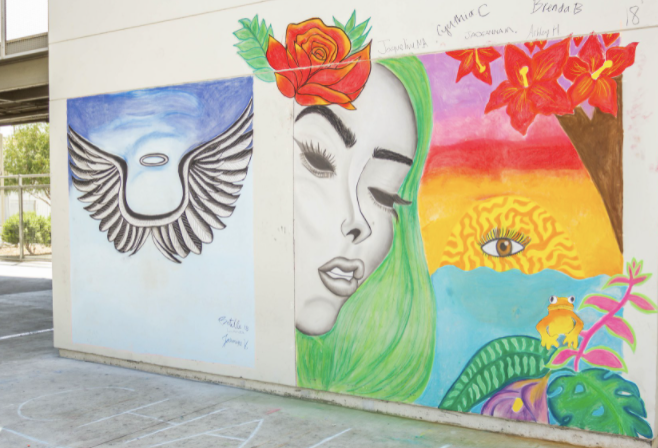
About the Authors
Marisa Saunders is associate director for research at UCLA’s Center for Community Schooling. Saunders is a former teacher whose research aims to support K-12 transformation efforts that address longstanding educational inequalities. In particular, her work examines the influence of teacher leadership, agency and ownership on K-12 transformation efforts and student outcomes. Saunders has authored a number of publications and books including Beyond Tracking: Multiple Pathways to College, Career, and Civic Participation and Learning Time: In Pursuit of Educational Equity.
Darlene Tieu is a science teacher at Mann UCLA Community School. She is also a community schools advocate and climate change educator. As part of a research-practice partnership with a UCLA PhD student, Darlene develops community-based science curriculum that aims to encourage the educational shifts that need to take place across the state and globally to address climate change and to identify effective solutions. Darlene was a featured speaker at the Environmental and Climate Change Literacy Project and Summit—part of an ambitious statewide strategy involving the University of California and California State University to expand opportunities for California students to learn about climate change.
Roberto Vega is the assistant principal at Social Justice Humanitas Academy at Cesar Chavez Learning Complex. He joined Social Justice Humanitas eleven years ago as a History teacher, and served as the Targeted Student Population coordinator from 2019-2021. Roberto is actively involved in the Los Angeles teacher-powered network and served on the first teacher representative board of the district’s Pilot School Organization to assist other teachers within Pilot Schools learn about and exercise their collective autonomies.
Rosa Jimenez is the Title III Coordinator at UCLA Community School. Rosa joined the UCLA-CS staff in 2009—the year the school opened—as a history teacher. Rosa assisted in the founding of Students Deserve—a group of LA Unified students, parents and teachers who work for justice in and beyond schools—and is one of the founders of Reclaim Our School Los Angeles. Rosa also serves as the co-chair of the LAUSD Community Schools Initiative Steering Committee where she supports and guides implementation of the district’s Community School Initiative, and as an Area Board of Director for United Teachers Los Angeles.
Lorenza Yarnes is a 5th grade teacher at Leo Politi Elementary School. Lorenza has taught at Leo Politi Elementary School for over 25 years and serves as the United Teachers Los Angeles chapter chair. Lorenza is also an adjunct professor of education at Mt. St. Mary’s College in Los Angeles where she teaches her craft to aspiring teachers.
Nivia Alvarado is a teacher of economics, government, history and ethnic studies at Humanitas Academy for Art and Technology where she joined the staff in 2017. As districts across California explore the option to offer ethnic studies, Nivia works alongside other teachers to elevate ethnic studies as a critical and necessary opportunity for students to see themselves reflected in their school and curriculum. Nivia is a fellow of the Institute for Teachers of Color Committed to Racial Justice and was a presenter in the 2020-21 Annual Conference.
10 MINUTE READ
This executive summary introduces you to a multi-year project conducted by community school teachers from the Los Angeles Unified School District. You will read about what it means to be a community school teacher. You will also read about the supports and structures that enable community teachers to respond to the assets and needs of students, families and the community. The full report, and accompanying resources aim to serve as a reminder that the work of community schools must be guided, in partnership, by the experiences and efforts of community teachers. “Portraits of Practice” provide a close up look at teachers’ practice and a short video captures a discussion by Teacher Research Fellows who documented their work to inform the larger community school movement.
TABLE OF CONTENTS
REPORT LINKS
CITATION
Saunders, M., Tieu, D., Vega, R., Jimenez, R., Yarnes, L., and Alvarado, N. (2021). Community Teachers: Taking Ownership of Whole Child Educational Practices. Community Schooling, Issue 1, Fall 2021. Los Angeles, CA: UCLA Center for Community Schooling
ACKNOWLEDGEMENTS
The authors are grateful for the opportunity to elevate the rich history of community schooling in Los Angeles and the powerful teaching practices that have served as its foundation. We thank the learning communities of Humanitas Academy of Art and Technology at Esteban E. Torres High School, Leo Politi Elementary School, Mann UCLA Community School, Social Justice Humanitas Academy at Cesar E. Chavez Learning Academies, and UCLA Community School at RFK Community Schools. We are especially grateful to our many colleagues within these settings who strengthen and support teacher practices including Principals Jeff Austin, Leyda Garcia, Orlando Johnson, Deborah Lowe and Luis Ochoa.
We also thank our colleagues at the UCLA Center for Community Schooling who have provided support throughout the project. We’d like to thank Karen Hunter Quartz for serving as a critical friend and advisor to the project and for her review of multiple drafts and thoughtful feedback. We also thank Jody Priselac and Christine Shen for their leadership, and Beth Happel for her invaluable support in designing this report. Without their generosity of time and spirit, this work would not have been possible.
We are grateful to the Stuart Foundation for their generous support of this research-practice partnership. The ideas voiced here are those of the authors and not those of our funders.
External Reviewers
This report benefited from the insights and expertise of external reviewers. We thank Deanna Niebuhr, California Policy and Program Director at the Opportunity Institute; Ellen Pais, educational consultant and former President and Chief Executive Officer of the Los Angeles Education Partnership; and Barnett Barry, Founding director of Accelerator for Learning and Leadership for South Carolina (ALL4SC) and Research Professor at the University of South Carolina. We appreciate their careful review and attentiveness.

